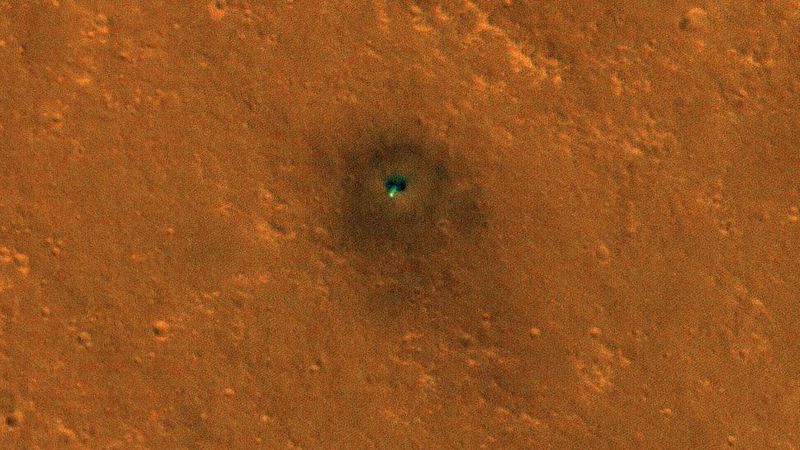Martian Oceans Hidden Beneath the Red Planet's Surface

New research, drawing on data from NASA's retired InSight mission, has uncovered evidence of a vast underground reservoir of water deep beneath the Martian surface. This discovery suggests that Mars may hold enough water to fill oceans on its surface, if it were to be released.
The study, published in the Proceedings of the National Academy of Sciences, estimates that the water is trapped within tiny cracks and pores of rock in the Martian crust, between 7 and 12 miles (11.5 and 20 kilometres) below the surface. This groundwater would likely cover the entire planet to a depth of 1 mile (1.6 kilometres).
InSight's seismometer, used to study Mars' interior from 2018 to 2022, played a crucial role in this discovery. By analysing the speed of marsquakes as they travelled through the planet, scientists were able to identify the presence of water. Seismic waves travel differently through different materials, providing clues about the composition of the Martian crust.
"Understanding the Martian water cycle is critical for understanding the evolution of the climate, surface and interior," stated lead author Vashan Wright, assistant professor and geophysicist at the University of California, San Diego's Scripps Institution of Oceanography. "A useful starting point is to identify where water is and how much is there."
While accessing this water poses significant challenges for future Martian explorers, the discovery provides valuable insights into the geological history of the red planet. It also suggests a new potential target for the search for life on Mars, as liquid water is essential for life as we know it.
"Establishing that there is a big reservoir of liquid water provides some window into what the climate was like or could be like," said study co-author Michael Manga, a professor of earth and planetary science at the University of California, Berkeley. "And water is necessary for life as we know it. I donât see why (the underground reservoir) is not a habitable environment."
The researchers believe that the water may be present in the form of "a kind of deep underground mud," similar to aquifers found on Earth. These findings add a new chapter to the Martian water puzzle, offering a potential explanation for the planet's lost water and hinting at the possibility of a subsurface biosphere.
The study highlights the importance of continued exploration of Mars, with the potential for future missions to deploy additional seismometers, providing a more comprehensive picture of the planet's interior and its evolution. This new discovery not only adds to our understanding of Mars' past but also opens exciting possibilities for future investigations into the potential for life on the red planet.





